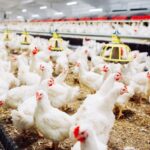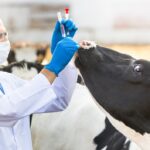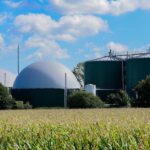Running a profitable pig farm in South Africa requires careful planning, investment in the right equipment and infrastructure, and an understanding of the market dynamics. This guide outlines key factors to consider for ensuring profitability in your pig farming venture.
1. Equipment Needed for Pig Farming
Essential Equipment
- Feeding Systems: Automatic feeders can optimize feed distribution and reduce labor costs.
- Water Supply Systems: Ensure a consistent and clean water supply using nipple drinkers or automatic waterers.
- Housing: Invest in good quality pens and housing to protect pigs from harsh weather and maintain health.
- Waste Management Systems: Incorporate proper waste disposal systems, such as biogas digesters or composting facilities, to manage waste effectively.
Additional Equipment
- Pig Handling Equipment: Include chutes, scales, and pens for safe handling during vaccinations and transfers.
- Heating Systems: Use heaters or heat lamps for piglets, especially during colder months.
2. Land Size Requirements
Ideal Land Size
- Small-Scale Operations: A minimum of 2-5 hectares can support a small-scale pig farm with around 50-100 pigs.
- Medium to Large-Scale Operations: For larger herds (200+ pigs), consider 10-20 hectares to accommodate grazing and expand production facilities.
Land Management
- Pasture Rotation: Utilize rotational grazing to improve soil health and provide forage.
3. Infrastructure Essentials
Housing Structures
- Pig Pens: Construct sturdy, well-ventilated pens to protect pigs from disease and stress.
- Storage Facilities: Build storage for feed, equipment, and waste to keep operations organized.
Biosecurity Measures
- Fencing: Install secure fencing to prevent unauthorized access and protect against predators.
- Isolation Areas: Designate areas for sick or new pigs to prevent disease spread.
4. Revenue Generation
Potential Revenue Streams
- Sale of Live Pigs: Market pigs to local abattoirs or directly to consumers.
- Breeding Stock: Sell piglets or breeding stock to other farmers.
- By-products: Consider selling manure for fertilizer or composting.
Pricing Strategy
- Competitive Pricing: Stay informed about market prices and adjust your pricing strategy accordingly to remain competitive.
5. Costs of Pig Farming
Initial Costs
- Infrastructure Development: Building pens, purchasing equipment, and initial land preparation.
- Breeding Stock: The cost of purchasing quality breeding pigs.
Ongoing Costs
- Feed: Feed typically constitutes the largest ongoing expense. Optimize feed formulations for efficiency.
- Veterinary Care: Regular health checks and vaccinations are crucial for maintaining herd health.
6. Risks in Pig Farming
Common Risks
- Disease Outbreaks: Swine flu or other diseases can devastate herds; implement strict biosecurity measures.
- Market Volatility: Fluctuating prices can affect profitability; diversify sales channels to mitigate this risk.
Risk Mitigation Strategies
- Insurance: Consider agricultural insurance to protect against losses due to disease or natural disasters.
- Monitoring: Regular health monitoring and market analysis can help in early detection of issues.
7. Strategic Planning for Profitability
Setting Goals
- Short-Term Goals: Focus on establishing operations, securing funding, and building market presence.
- Long-Term Goals: Aim for expansion, diversification of products, and brand development.
Business Planning
- Business Plan: Develop a comprehensive business plan outlining your vision, operational strategies, and financial projections.
8. Efficiency and Productivity
Operational Efficiency
- Feed Conversion Ratio: Aim for an optimal feed conversion ratio (FCR) to ensure pigs grow efficiently.
- Automation: Implement automation in feeding and monitoring to reduce labor costs and improve efficiency.
Productivity Improvement
- Genetics: Invest in high-quality breeding stock to improve growth rates and disease resistance.
- Management Practices: Regular training for farm staff on best practices in animal husbandry can boost productivity.
9. Market Analysis
Understanding Market Demand
- Local Demand: Analyze local market demand for pork products and adjust production accordingly.
- Consumer Trends: Stay updated on consumer preferences for organic or free-range pork.
Marketing Strategy
- Branding: Develop a brand that emphasizes quality, sustainability, or local production to attract customers.
- Direct Sales: Explore direct sales opportunities, such as farmers’ markets or online platforms.
10. Financial Management
Budgeting and Forecasting
- Budgeting: Create a detailed budget to monitor expenses and income effectively.
- Cash Flow Management: Regularly analyze cash flow to ensure operations remain sustainable.
Record Keeping
- Documentation: Maintain accurate records of expenses, revenues, breeding, and health management to inform decision-making.
11. Growth and Investment Strategies
Growth Opportunities
- Scaling Up: Consider increasing herd size or expanding operations as demand grows.
- Diversification: Explore diversifying into related products, such as value-added products (e.g., bacon or sausages).
Investment in Technology
- Innovative Solutions: Invest in modern farming technologies that enhance productivity and reduce costs, such as precision farming tools.
12. Funding Opportunities
Available Funding Sources
- Government Grants: Research government programs that provide financial assistance to farmers.
- Agri-financial Institutions: Consider loans from agricultural banks, such as the Land Bank or Development Bank of Southern Africa.
Crowdfunding and Partnerships
- Crowdfunding Platforms: Explore crowdfunding options to raise capital for expansion or new projects.
- Partnerships: Form partnerships with local businesses or cooperatives to share resources and reduce costs.
13. Strategic Planning for the Future
Long-Term Vision
- Market Positioning: Establish a strong market position and identify your unique selling propositions (USPs).
- Sustainability Goals: Incorporate sustainability practices in your operations to appeal to environmentally conscious consumers.
Regular Review
- Performance Analysis: Regularly review your business performance against your strategic goals to identify areas for improvement.
Adapting to Change
- Flexibility: Stay flexible and ready to adapt to changing market conditions, regulations, and consumer preferences.
Running a profitable pig farm in South Africa involves meticulous planning, investment in the right resources, and a keen understanding of the agricultural landscape. By focusing on equipment, infrastructure, market dynamics, and effective financial management, farmers can achieve sustained profitability and contribute positively to the agricultural sector. With the right strategies and commitment, a pig farming business can thrive in South Africa’s vibrant agricultural environment.
Join 'Farmers Mag' WhatsApp Channel
Get the latest Farming news and tips delivered straight to your WhatsApp
CLICK HERE TO JOIN






